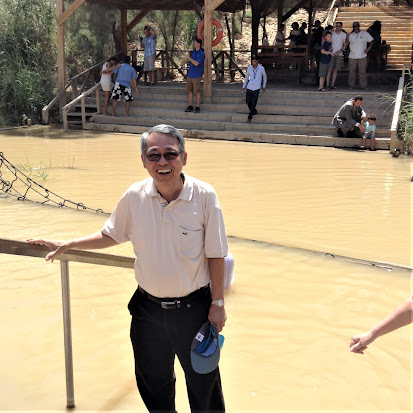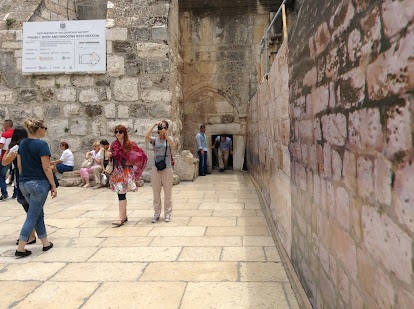This blog is a continuation of the recent entry on the Tour of Israel in late May to early June 2014 (Read here).
*************************
The mountain range situated barely 5Km northwest of Jericho was believed to be the mountain where Jesus was taken to after his baptism by John the Baptist. Matthew 4: 1-11 record the story of the fasting of Jesus for 40 days and nights and he was tempted by the devil on the mountain. By tradition, it was believed that on this mountain, the devil showed the kingdoms of the world to Jesus and pleaded for Jesus' homage in exchange for the kingdoms of this world. The story ended with the devil fleeing after his scheme failed.
The peak of the Mount of Temptation at 350m above sea level looks high and majestic because the plain where Jericho occupies is 250m below sea level. Jericho, with an annual rainfall of between150mm and 400mm (2,000mm for KK, Sabah), it is no wonder we have not heard of flood in this part of the world even it is way below the sea level.
At the foot of the Mount of Temptation, we could make out from a distance row of buildings perched high on the barren, rugged and steep slope of the mountain. Unfortunately, our touch-and-go short visit to this pilgrimage site did not allow time for a visit to these old structures. These buildings belonging to the Greek Orthodox Monastery of Temptation were built in 1895. The chapel in the Monastery is built around a cave with a stone believed to be where Jesus once sat during his fasting. It was said that the Monastery complex is now inhabited by just three monks.
 |
| A sycamore tree at Jericho. |


























































